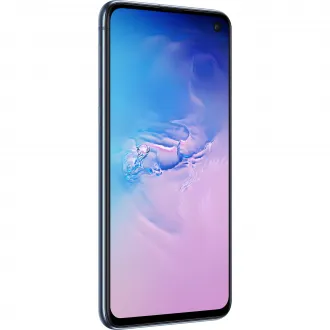In order to be able to do more technical changes to your Samsung Galaxy S10e you will need to install some extra software on your computer system to bridge to flash custom firmware. Only do any of these technical functions to your phone if it is out of warranty and know that there is a risk of permanent damage to the device. Custom ROM can be found at XDA developers forum, also for ADB, CDC & VCOM functions are below.
Android based phones that use ADB drivers to interface with the phone to access advanced features that an advanced user of a phone may want to access. Changing the operating system/Custom ROM is one of the primary reasons to use it. For example, Linage OS which is a clean version of Android that has bloatware removed from it or Ubuntu touch which is a port of Ubuntu for mobile phones. Whatever you are going to do via the USB port that isn’t just accessing photos or other content that would be accessible with standard mass storage USB drivers will be done with the ADB interface, and whatever drivers are needed for your chipset.
Network: Technology:
GSM / CDMA / HSPA / EVDO / LTE
Body: Dimensions: 142.2 x 69.9 x 7.9 mm (5.60 x 2.75 x 0.31 in)
Weight: 150 g (5.29 oz)
Build: Glass front (Gorilla Glass 5), glass back (Gorilla Glass 5), aluminum frame
SIM: Single SIM (Nano-SIM) or Hybrid Dual SIM (Nano-SIM, dual stand-by)
Step 1 — Download and extract the Android USB Driver to your PC.
Step 2 — Click Start (Windows) -> Control Panel -> Device Manager (Select Device Manager).
Step 3 — On the Device Manager window find and click on computer name to select Add legacy hardware.
Step 4 — Select Next
Step 5 — Selext Install the hardware that I manually select from a list (Advanced), and click the Next
Step 6 — Select Show All Devices afterward click Next button again.
Step 7 — Click the Have Disk button.
Step 8 — Click Browse button to find the extracted Android ADB Driver -> android_winusb.inf and click on Open.
Step 9 — Click OK.
Step 10 — Now select the Android ADB Interface -> click Next button.
Step 11 — Click Next button again.
Step 12 — Windows Security box will appear, to confirm whether you really want to install the Android USB Driver, so just choose the Install this driver software anyway.
Step 13 — Once you clicked the Finish button, then repeat from step 2 to choose Android Composite ADB Interface.
Step 14 - Done.
Show: Full Specs/Additional configurations
Network: Technology:
GSM / CDMA / HSPA / EVDO / LTE
Launch: Announced: 2019, February 20
Status: Available. Released 2019, March 08
Body: Dimensions: 142.2 x 69.9 x 7.9 mm (5.60 x 2.75 x 0.31 in)
Weight: 150 g (5.29 oz)
Build: Glass front (Gorilla Glass 5), glass back (Gorilla Glass 5), aluminum frame
SIM: Single SIM (Nano-SIM) or Hybrid Dual SIM (Nano-SIM, dual stand-by)
: Samsung Pay (Visa, MasterCard certified)
IP68 dust/water resistant (up to 1.5m for 30 mins)
Display: Type: Dynamic AMOLED, HDR10+
Size: 5.8 inches, 82.8 cm2 (~83.3% screen-to-body ratio)
Resolution: 1080 x 2280 pixels, 19:9 ratio (~438 ppi density)
Protection: Corning Gorilla Glass 5
: Always-on display
Platform: OS: Android 9.0 (Pie), upgradable to Android 10, One UI 2
Chipset: Exynos 9820 (8 nm) - EMEA/LATAM
Qualcomm SM8150 Snapdragon 855 (7 nm) - USA/China
CPU: Octa-core (2x2.73 GHz Mongoose M4 & 2x2.31 GHz Cortex-A75 & 4x1.95 GHz Cortex-A55) - EMEA/LATAM
Octa-core (1x2.84 GHz Kryo 485 & 3x2.42 GHz Kryo 485 & 4x1.78 GHz Kryo 485) - USA/China
GPU: Mali-G76 MP12 - EMEA/LATAM
Adreno 640 - USA/China
Memory: Card slot: microSDXC (uses shared SIM slot) - dual SIM model only
Internal: 128GB 6GB RAM, 256GB 8GB RAM
: UFS 2.1
Main Camera: Dual: 12 MP, f/1.5-2.4, 26mm (wide), 1/2.55", 1.4µm, Dual Pixel PDAF, OIS
16 MP, f/2.2, 12mm (ultrawide), 1/3.1", 1.0µm, Super Steady video
Features: LED flash, auto-HDR, panorama
Video: 4K@60fps (no EIS), 4K@30fps, 1080p@30/60/240fps, 720p@960fps, HDR10+, stereo sound rec., gyro-EIS & OIS
Selfie camera: Single: 10 MP, f/1.9, 26mm (wide), 1/3", 1.22µm, Dual Pixel PDAF
Features: Dual video call, Auto-HDR
Video: 4K@30/60fps, 1080p@30fps
Sound: Loudspeaker: Yes, with stereo speakers
3.5mm jack: Yes
: 32-bit/384kHz audio
Tuned by AKG
Comms: WLAN: Wi-Fi 802.11 a/b/g/n/ac/6, dual-band, Wi-Fi Direct, hotspot
Bluetooth: 5.0, A2DP, LE, aptX
GPS: Yes, with A-GPS, GLONASS, BDS, GALILEO
NFC: Yes
Radio: FM radio (USA & Canada only)
USB: USB Type-C 3.1
Features: Sensors: Fingerprint (side-mounted), accelerometer, gyro, proximity, compass, barometer
: ANT+
Bixby natural language commands and dictation
Battery: Type: Li-Ion 3100 mAh, non-removable
Charging: Fast charging 15W
USB Power Delivery 2.0
Fast Qi/PMA wireless charging 15W
Reverse wireless charging 4.5W
Misc: Colors: Prism White, Prism Black, Prism Green, Prism Blue, Canary Yellow, Flamingo Pink
Models: SM-G970F, SM-G970U, SM-G970W, SM-G9700, SM-G970U1
SAR: 0.56 W/kg (head) 0.70 W/kg (body)
SAR EU: 0.58 W/kg (head) 1.57 W/kg (body)
